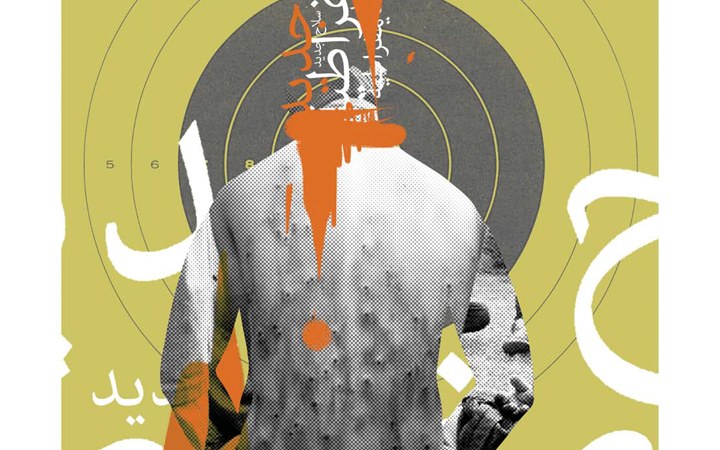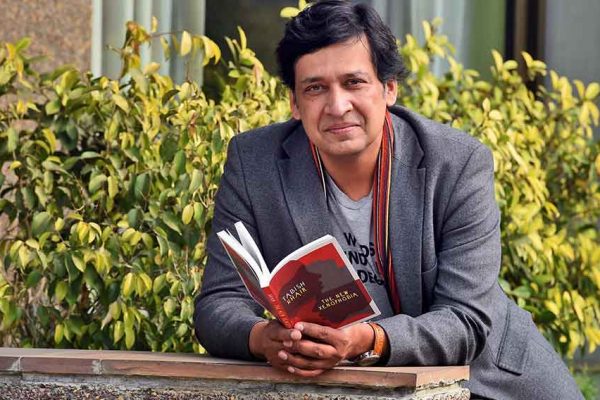Before he was hanged, Afzal Guru was confined in a 16 ft by 12 ft cell. While he was being hanged, lakhs of Kashmiris woke up to find themselves imprisoned within a 15,000 square kilometres plus area of the Valley. Once eulogized in poetry as paradise, it is a prison ever since Afzal Guru was hanged in Tihar jail. The incident has found resonance in the hearts and minds of the people in Kashmir, those who believe him to be a martyr as well as those who consider him a victim denied a fair chance to defend himself before a democracy’s legal justice system. Anger throbbing within and curfew caging them from outside; there couldn’t have been a more potent recipe for disaster in a place deemed one of the most dangerous flashpoints on earth.
Afzal Guru wasn’t convicted and sentenced because there was evidence against him, other than circumstantial ones and a confession, accepted selectively; the same evidence that there is against the Hindutva elements involved in Samjhauta, Mecca and Ajmer blasts where cases cannot progress because proof is too weak. He was hanged to satiate our ‘collective conscience’. But secrecy of the affair, denying Guru a chance to plead for judicial review, and forbidding him to have that last meeting with his wife and 14 year old son exacerbated the anger. When they buried him in some unknown 6 feet space inside Tihar jail, exactly two days less than 29 years after Maqbool Butt— the founder of Jammu Kashmir Liberation Front— was buried inside the same premises, it was a message to the ordinary Kashmiris that their fate is in the hands of a democratic state that treats even mortal remains as seditious and perceives them as a potential threat, because even before they got a whiff of the hanging, they needed to be curfew-ed fully – disallowed to creep on streets barricaded doubly by barbed wires and more troops, disallowed to watch news by barring all local channels and blocking national ones, disallowed to read news by banning newspapers, disallowed to move their fingers on the keypads or put their thoughts into words by banning the internet, for a week. The much publicised picture of ‘Happy Valley’ oozing with bubbling tourists that was being sold by the government and its collaborators for a year came crashing down in those first few moments. If the Valley indeed was such a happy place, where was the need to curfew it and impose a slew of bans because one man had been sent to the gallows?
But what our government forgot in its overzealousness was that curfews cannot contain sentiments like anger. They can’t confine the protest calendars of the separatists even as they remain under house arrest. They can’t contain the young boys driven by rage to pour out on streets, rent slogans and pelt stones, which they did. The security men in heavy gears gleefully responded with bullets. Five people were shot dead within a month, one succumbing to injuries received during stone pelting. On March 13, a fidayeen attack took place in Srinagar, 5 CRPF men were shot dead by militants but in another locality the CRPF retaliated, firing at a passerby. The death of the CRPF men, eulogized nation-wide as ‘brave men’, became national news; the civilian who was shot dead slipped away anonymously and this ‘brave-act’ of another CRPF personnel remained unquestioned. Rather Kashmiris, always caught on the backfoot, find themselves facing bellicose queries of the rest of the country: Why haven’t they adequately mourned the deaths of the CRPF men? Anger, rage, fury, outburst, sometimes, seem words too small to describe the dominant emotion in the valley post-Afzal Guru. It is so deep a black-hole, that it would suck in one swirl, the entire Valley and its surroundings. The hanging and its after-math has shocked not just the eternally alienated pro-azadi campaigners and their supporters but also those who have always been enamoured by India and its democracy. It is not difficult to sense the stink of the double standards, the adulterated form of democracy that reaches this land. It is not difficult to feel isolated, humiliated and pushed to the brink in this totalitarian space within the world’s grandest democracy.
And, the trouble is that this extremely acute injury is not even being allowed to heal, let alone make attempts to treat it. Two days after the fidayeen attack on a CRPF camp, the Valley finds itself caught in an endless, unbreakable cycle of C’s – Curfew, Crackdowns, Calendars (protest calendars issued every week by separatist leaders), Confusion and Chaos. In many ways the streets resemble the summer of 2010, only relief that the number of killings during protests is still low. However, in many ways, it is much worse than 2010 – the level of anger and helplessness. Besides, to the usual fare of stone pelting, rampaging, bullets and targeted smoke shells is added the new fare of pepper gas and pepper pellets. Pepper guns were introduced in the Kashmir Valley as a “non-lethal” method for controlling mass protests after the experience of 2010 when over 120 civilians were killed during protests. In late February, when the state legislative assembly session began, the Governor’s address listing the achievements of the state government made only a brief passing reference to issue of human rights, detailing that ‘non-lethal weapons will be used to combat protesting mobs’ to check human rights abuse.
Pepper gun shoots projectile balls containing super irritant Capsaicin II (the burning component in chillies) in the form of concentrated dry powder that bursts upon impact. The dry powder creates dust around the target, temporarily blinding people for 3-5 minutes. Those directly hit by pepper-filled gun pellets suffer a spray of injuries with just one burst and doctors are finding it an extremely difficult task to extract these pellets. The so-called non-lethal weapon has become a major health hazard causing eye damage, skin lacerations and asthama. A woman in Srinagar died, as per doctors, because of pepper gas exposure and pregnancy of another woman was terminated allegedly after she was exposed to this lethal gas. However, the officials are still in denial about these deaths or the collective damage that the pepper spray is particularly causing. This, even as State Human Rights Commission has cautioned against use of such weapons causing severe health hazards. Two PILs have been submitted before Jammu and Kashmir High Court seeking ban on pepper gas and pepper guns. The dangers of the use of pepper gas in law enforcement have also been recognized world-wide and several countries have banned the use of these toxic chemical weapons. However, these are not only being liberally used in Kashmir, but being celebrated as attempts to upkeep human rights, much to everyone’s shock and horror.
The old proverb ‘Rubbing salt over injury’ has been literally enacted with pepper substitute. Amid all this horrifying absurdity, one cannot miss the irony. The British imperial powers ruled India for years to loot its diverse fare of spices. Today, a free democratic India liberally uses a spice, locked up in imported guns, to squander them liberally and collectively on Kashmiris.


